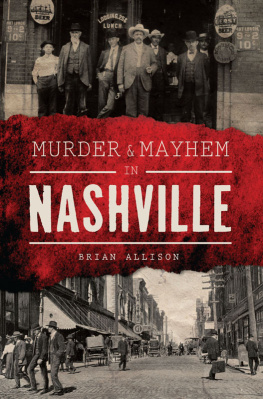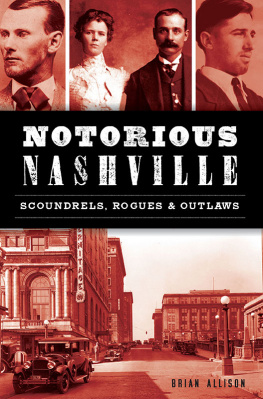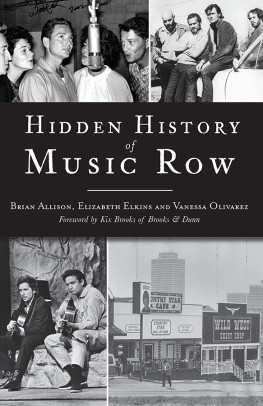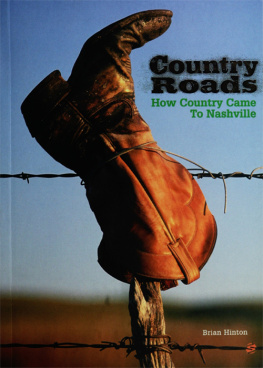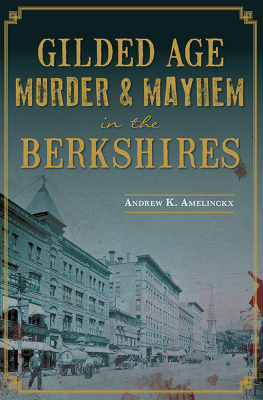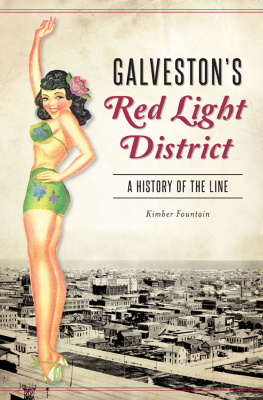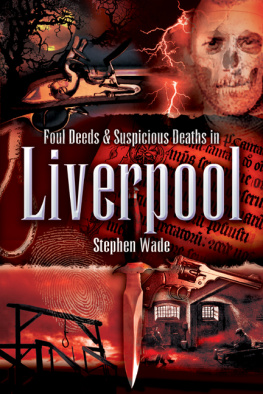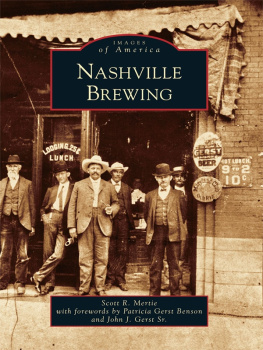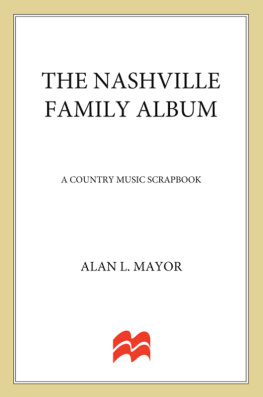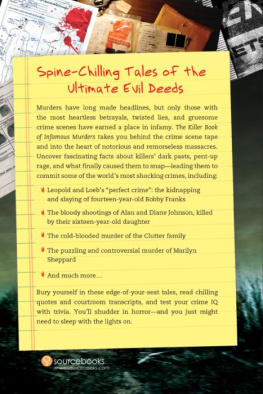


Published by The History Press
Charleston, SC
www.historypress.net
Copyright 2016 by Brian James Allison
All rights reserved
First published 2016
e-book edition 2016
ISBN 978.1.43965.772.0
Library of Congress Control Number: 2016938319
print edition ISBN 978.1.46713.573.3
Notice: The information in this book is true and complete to the best of our knowledge. It is offered without guarantee on the part of the author or The History Press. The author and The History Press disclaim all liability in connection with the use of this book.
All rights reserved. No part of this book may be reproduced or transmitted in any form whatsoever without prior written permission from the publisher except in the case of brief quotations embodied in critical articles and reviews.
CONTENTS
ACKNOWLEDGEMENTS
Any project like this cannot come to be without the input of some wonderful people. And oftentimes, the only thing an author can do in return is give them a well-deserved and sincere thank you.
So here goes. Many thanks to Candice Lawrence, my editor at The History Press, for all the help and support and for believing in this book and getting it to press in the first place.
To Ken Fieth and Kelly Sirko at the Metro Nashville Archives, thank you for letting me look through your wonderful collection of the citys past. For anyone looking to research Nashvilles often tumultuous past, stop in and see themits a treasure-trove of historical gems. And Kelly, I totally used your suggestion for the title of the piece on Prince Greer. Its perfect.
To Kelly Wilkerson, Tom Kanon, Heather Adkins and Steve Rutherford at the Tennessee State Library and Archives, thanks for putting up with all the little aggravations that go with helping the lost find their way. By the way, the TSLA is another underrated treasure, not just for Nashville, but also for the entire state of Tennessee.
To Valerie McCauely, a very, very sincere thank-you for allowing me to use the wonderful photo of your ancestor Officer Benjamin F. Dowell and his wife, Alice. Also, thank you for the stories you shared about them and their children. Even though he died so long ago, it helps to put into perspective that all of those affected by these tragedies were real human beings and loved by those who remembered them.
To Cynthia Gore at Mount Olivet Cemetery, thank you for being so warm and helping me locate the final resting places of some of these folks. Again, if youre looking for local history, you cant beat a visit to the resting place of those who went before. A stroll through this beautiful Victorian cemetery is a moving experience and really makes you realize the power and influence of the former residents of the city.
To my friends Lydia Melton, Josh Hall, Jason and Rachel Kirk and all the restthanks for putting up with a nut with a love of old and often creepy stories and for keeping me as sane as I can be. I hope you like the bookI think its very vampyr.
To the many fellow researchers, writers and historians who helped me run down obscure facts and sources: Bill ONeal, Jim Knight, Daniel E. Sutherland, the Sisters at St. Cecilia and everyone else I forgot to mention, thank you!
And finally, to Mom and my brothers, thank you very much for the love and support youve shown over the years. Look at thisI made a book! Who would have thought?
INTRODUCTION
Nashville today is a modern city much like many others. Steel, glass and concrete towers take up much of downtown, offering all the goods and services one would expect from a vibrant and thriving town. The population as of this writing is over 600,000 (about the same as Boston), so theres no denying that the city has arrived as a major metropolis.
However, that progress comes at a price. Nashville has a short memory and always has. Ever since its beginning, the town has never really revered its past, and a sense of out with the old, in with the new has always prevailed. The result is that little remains today to remind a visitor of the towns colorful history.
There are notable exceptions, and if you know where to look, there are still places where the veil seems to part for a moment and give a peek into the past. Standing on the platform at Union Station Hotel on a quiet Sunday morning, you can just about picture the clouds of steam and the rush and confusion as crowds exit the cars while porters roll cartloads of baggage toward waiting taxicabsas they did every day until forty years ago.
At Fort Negley a few miles away, sometimes it is possible to picture lines of Union troops drawn up on dress parade, weapons flashing in the sunlight as their officers commands echo off the rocks around them, preparing for a battle they would never have to fight.
Stand near the Hermitage Hotel, and you can imagine crowds of women in long dresses and large hats, wearing banners and yellow roses as they swarm around the building passing out flyers and reminding people to support the right of women to votea right that was fought for and won in the Capitol Building just a stones throw away.
Like many cities, Nashville has a long and interesting history, with much to boast about, and there are plenty of museums, cemeteries and landmarks dotting its environs that cater to the interested visitor. But like every town, Nashville also has a different history, full of darker places that its probably better to be modest about.
There is something fascinating about exploring the shadows of a city and looking into places where, in real life, we would probably fear to tread. Maybe its the fascination that comes with the forbidden, or maybe its just some primitive instinct, but many times we just like to hear about people being bad. Theres nothing wrong with thathistory is supposed to be instructive, and its just as effective when its giving an example of how not to do something.
If one knows where to look, there are reminders of this darker past, as well. Stand near the entrance of Printers Alley and all its gloriously trashy tourist enticements, and you can just about picture the elegant mahogany bars and glittering glassware of the Gentlemans District, where two hundred saloons offered five-cent beer and free lunch for customersas well as other diversions, if you knew who to ask.
Down near the riverfront, you can sometimes see reminders of what was once an overflowing wharf, full of steamboats jockeying for position as laborers offloaded cargo before going uphill to blow their wages in the sinful dives of Smoky Row just about a half mile up Second Avenue.
Standing in the public square park, you can imagine a well-heeled gentleman in a top hat and black frock coat striding like a gunfighter toward an opponent, fingers on a dirk or pistol beneath his vest and heart full of anger over some imagined slight to his honor.
This book is intended to be an introduction to some of the more colorful slices of Nashvilles past and to lead you off the beaten path into some forgotten territory. It is not intended to glorify those crimes; rather, its a gentle reminder that not everyone in a citys history made the newspapers for the right reasons. If anything, it may serve as a lesson that people are people, and human behavior really doesnt change much over the years. There is something a bit comforting in realizing our ancestors could be just as frail or pig-headed as we are. They made bad decisions, too.
Next page
